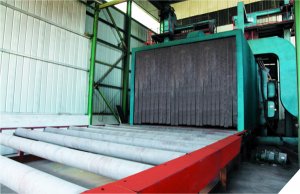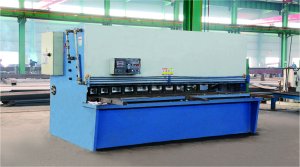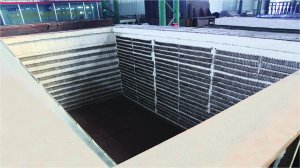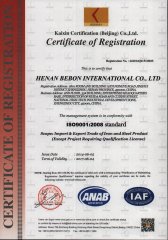The production and use of A537 Class 1 steel usually needs to comply with relevant standards and specifications, such as the ASTM A537/A537M standard in the American ASTM (American Society for Testing and Materials) standards, which details the chemical composition, mechanical properties, and heat treatment requirements of the steel. wait.A537 Class 1 steel typically requires heat treatment to achieve specific mechanical property requirements. Common heat treatment methods include normalizing treatment (normalizing) and post-normalizing aging treatment to adjust the structure and properties of the steel.A537 Class 1 steel is typically produced in thicknesses between 5mm and 150mm, and can be customized to meet specific engineering needs.During production and use, A537 Class 1 steel requires strict testing and quality control to ensure that it meets standard specifications and has stable performance. Common testing methods include chemical composition analysis, mechanical property testing, impact testing, hardness testing, etc.Equipment made of A537 Class 1 steel needs to pay attention to safety and reliability during operation and maintenance, especially in working environments under high temperature and high pressure conditions. Relevant design and operating specifications must be strictly followed to ensure the safe operation of the equipment.
A537 Class 1 steel is a hot-rolled carbon steel plate commonly used to make the shells and heads of high-temperature pressure vessels and is suitable for applications in cryogenic service conditions. The chemical composition of A537 Class 1 steel usually includes elements such as carbon (C), manganese (Mn), phosphorus (P), sulfur (S), silicon (Si) and copper (Cu). Its specific composition requirements are determined according to relevant standards, and generally meet the requirements of pressure vessel steel. A537 Class 1 steel has certain yield strength, tensile strength and elongation requirements at room temperature. Its mechanical properties can be adjusted through heat treatment to meet the needs of different engineering projects. A537 Class 1 steel is usually used to manufacture high-temperature and high-pressure pressure vessels, such as boilers, reactors, and storage tanks. Due to its good high temperature resistance and corrosion resistance, it is suitable for applications in chemical industry, petroleum, natural gas, nuclear power and other fields. A537 Class 1 steel has good welding properties and can be connected through conventional welding methods. The welded joints have good strength and sealing properties. Since A537 Class 1 steel is typically used in low-temperature service conditions, its toughness performs well in low-temperature environments, maintaining strength and plasticity to ensure safe operation of equipment.
A537 Class 1 steel has good high temperature resistance and can maintain good mechanical properties and structural stability under high temperature conditions. This makes it particularly suitable for manufacturing equipment such as pressure vessels and reactors that operate in high-temperature environments. A537 Class 1 steel has high yield strength and tensile strength, and can withstand large mechanical loads and pressure loads, ensuring the safety and reliability of equipment during work. Although A537 Class 1 steel has higher strength, it still has good toughness and is able to maintain structural integrity when subjected to shock or vibration, ensuring safe operation of equipment. A537 Class 1 steel has good welding properties and can be connected through conventional welding methods. The welded joints have good strength and sealing properties. This makes the manufacturing process simpler and more efficient. A537 Class 1 steel usually has certain corrosion resistance and can resist some common corrosive media, such as water, steam and some chemicals, extending the service life of equipment. A537 Class 1 steel also has good low-temperature toughness and is able to maintain strength and plasticity in low-temperature environments, making it suitable for applications under low-temperature service conditions.
A537 Class 1 steel is often used to manufacture various types of industrial boilers, including thermal power plant boilers, gas boilers, steam boilers, etc. These boilers usually work under high temperature and high pressure conditions and need to have good heat resistance and pressure resistance. A537 Class 1 steel is the ideal material to meet these requirements. Reactors in the chemical, oil and gas industries often need to withstand high temperature and high pressure working environments. A537 Class 1 steel is widely used in the manufacture of these reactors to ensure they can operate safely and reliably. A537 Class 1 steel is also commonly used to manufacture various storage containers and tanks, such as crude oil storage tanks, natural gas storage tanks, chemical storage tanks, etc. These tanks often require structural stability and sealing under extreme operating conditions, and A537 Class 1 steel meets these requirements. Equipment such as pressure vessels and reactor pressure vessels in the nuclear power industry have extremely strict material requirements. A537 Class 1 steel is widely used in the manufacturing of nuclear power equipment because of its good high temperature and high pressure performance and good corrosion resistance. In addition to the above fields, A537 Class 1 steel can also be used in fields such as oil drilling equipment, shipbuilding and chemical equipment, where components need to withstand high temperature and high pressure working environments.

 Address:Zhengzhou city in China.
Address:Zhengzhou city in China. Phone:0086-371-86151827
Phone:0086-371-86151827 Email:
Email:



 Address: Zhengzhou city in China.
Address: Zhengzhou city in China.


